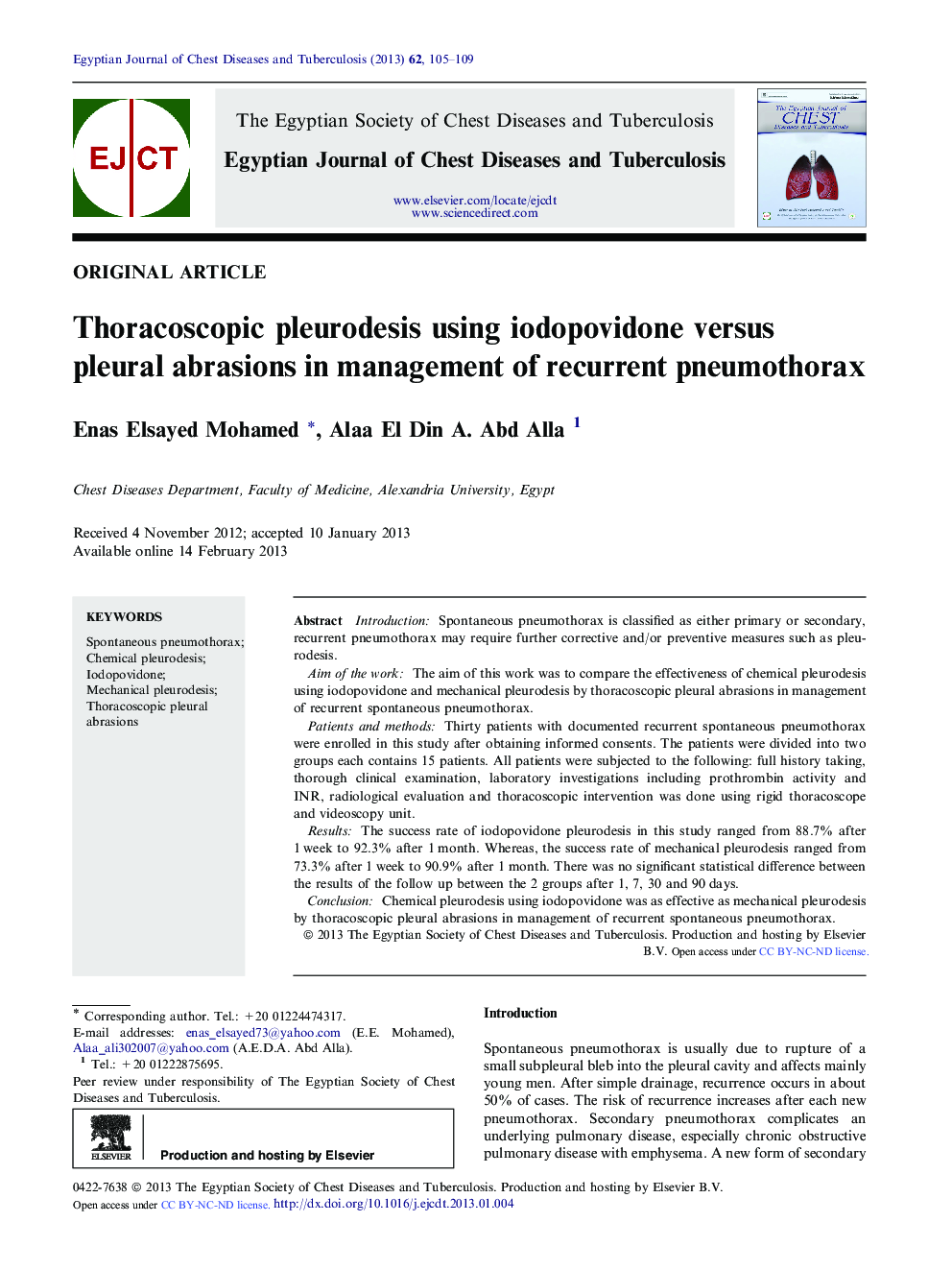| Article ID | Journal | Published Year | Pages | File Type |
|---|---|---|---|---|
| 3400316 | Egyptian Journal of Chest Diseases and Tuberculosis | 2013 | 5 Pages |
IntroductionSpontaneous pneumothorax is classified as either primary or secondary, recurrent pneumothorax may require further corrective and/or preventive measures such as pleurodesis.Aim of the workThe aim of this work was to compare the effectiveness of chemical pleurodesis using iodopovidone and mechanical pleurodesis by thoracoscopic pleural abrasions in management of recurrent spontaneous pneumothorax.Patients and methodsThirty patients with documented recurrent spontaneous pneumothorax were enrolled in this study after obtaining informed consents. The patients were divided into two groups each contains 15 patients. All patients were subjected to the following: full history taking, thorough clinical examination, laboratory investigations including prothrombin activity and INR, radiological evaluation and thoracoscopic intervention was done using rigid thoracoscope and videoscopy unit.ResultsThe success rate of iodopovidone pleurodesis in this study ranged from 88.7% after 1 week to 92.3% after 1 month. Whereas, the success rate of mechanical pleurodesis ranged from 73.3% after 1 week to 90.9% after 1 month. There was no significant statistical difference between the results of the follow up between the 2 groups after 1, 7, 30 and 90 days.ConclusionChemical pleurodesis using iodopovidone was as effective as mechanical pleurodesis by thoracoscopic pleural abrasions in management of recurrent spontaneous pneumothorax.
